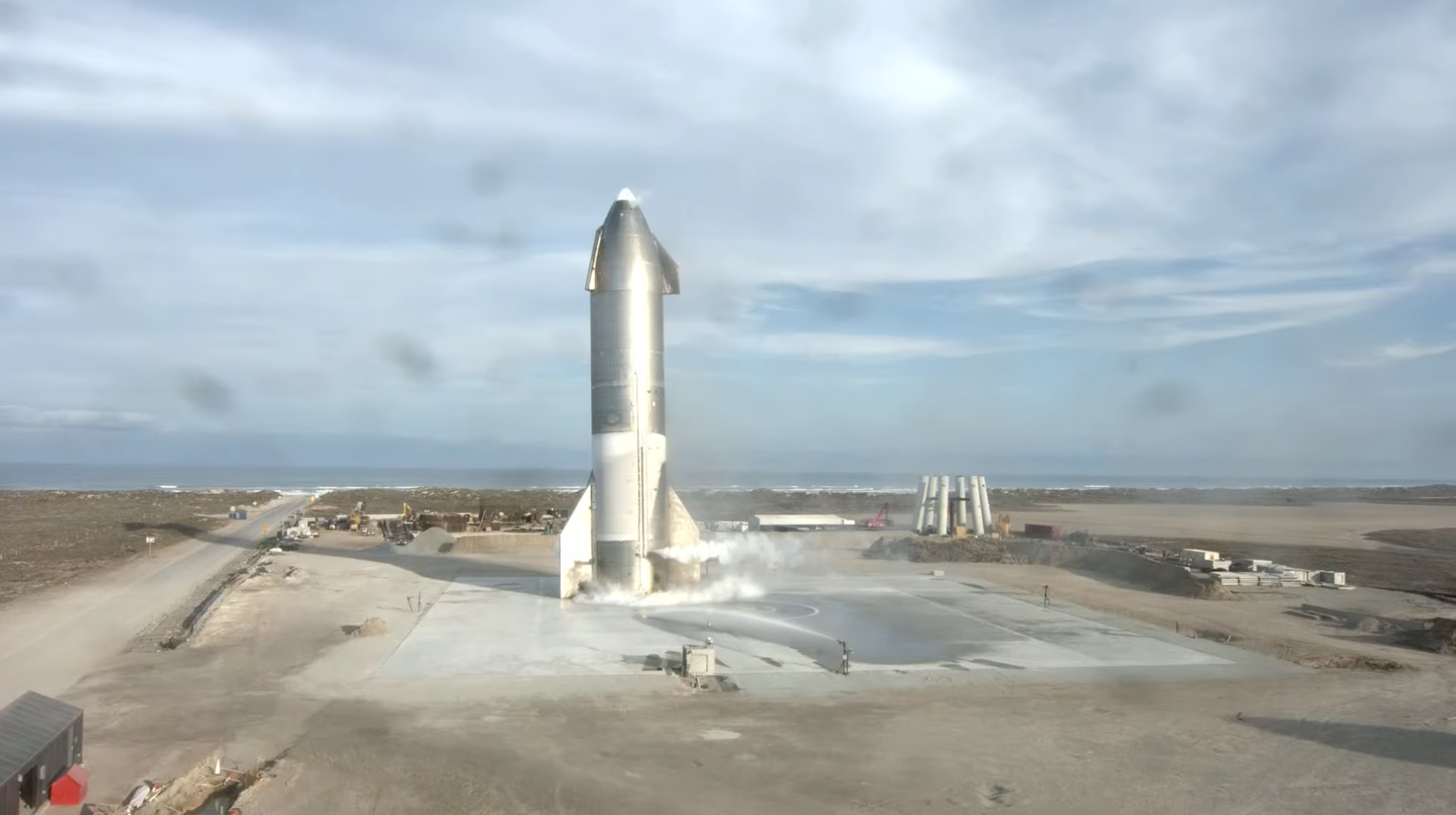SpaceX’s Starship has finally stuck the landing on its third high-altitude flight
Unlike in the first two missions, the spacecraft was able to safely land—before it then blew up.

On March 3, SpaceX’s Starship pulled off a successful high-altitude flight—its third in a row. Unlike in the first two missions, the spacecraft stuck the landing. Then, as in the last two, the spacecraft blew up.
What happened: At around 5:14 p.m. US Central Time, the 10th Starship prototype (SN10) was launched from SpaceX’s test facility in Boca Chica, Texas, flying about 10 kilometers into the air before falling back down and descending safely to Earth.
About 10 minutes later, the spacecraft blew up, from what appears to have been a methane leak. Still, the actual objectives of the mission were met.
What’s the big deal? This is the first time Starship has landed safely after a high-altitude flight. SN8 was flown on December 9 and went up 12.5 km into the air before it crashed in an explosive wreck when it hit the ground too fast. SN9, flown February 2 to 10 km in altitude, experienced virtually the same fate during its attempted landing. Both missions attempted to use only two of the spacecraft’s three engines to land. SN10, on the other hand, utilized all three, nailing the vertical landing, albeit ending up a little lopsided.
What’s the Starship? It’s the vehicle that SpaceX is developing to one day send astronauts to the moon, Mars, and other destinations beyond Earth’s orbit. It’s 50 meters tall, weighs over 1,270 metric tons when loaded with fuel, and is supposed to be able to take more than 100 tons of cargo and passengers into deep space. In its final form, Starship sits on top of the Super Heavy rocket (currently in development) and doubles as a second-stage booster. Both the Super Heavy and Starship itself will use the company’s methane-fueled Raptor engines.
What’s next: That’s not entirely clear. SpaceX has now proved that Starship can fly high into the air and land safely. SN11 might undergo the same flight, or the company might subject it to some other testing. But SpaceX is definitely closer to its goal to fly Starship into space sometime this year. CEO Elon Musk has previously expressed hopes of launching people to Mars by 2026 or even 2024.
Deep Dive
Space
How to safely watch and photograph the total solar eclipse
The solar eclipse this Monday, April 8, will be visible to millions. Here’s how to make the most of your experience.
The great commercial takeover of low Earth orbit
Axiom Space and other companies are betting they can build private structures to replace the International Space Station.
How scientists are using quantum squeezing to push the limits of their sensors
Fuzziness may rule the quantum realm, but it can be manipulated to our advantage.
Stay connected
Get the latest updates from
MIT Technology Review
Discover special offers, top stories, upcoming events, and more.